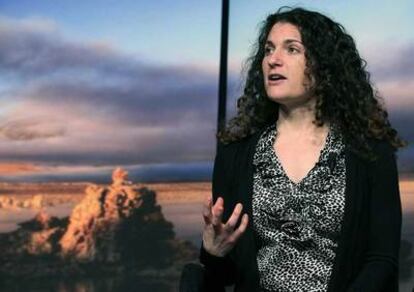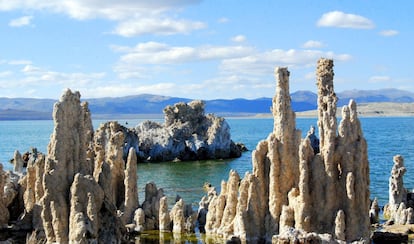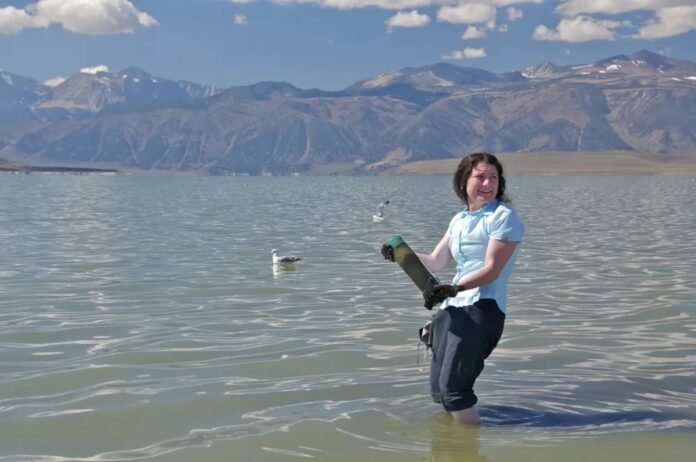For a few days in December 2010, the world fantasized about the discovery of extraterrestrial life. NASA had sent out a press release to present “an astrobiological discovery” that would impact the search for life beyond Earth. The result was one of the biggest scientific controversies in recent history, and this Thursday a new chapter was written with the unilateral decision by the prestigious research journal Science to withdraw the study. In it, 12 scientists from NASA and the United States Geological Survey claimed to have discovered an alternative life form living in Mono Lake, California, that thrived on arsenic, a compound capable of annihilating any other known organism.
“Science has decided that this Research Article meets the criteria for retraction by today’s standards. Therefore, we are retracting the paper,” wrote Holden Thorp, editor-in-chief of the American journal, one of the most influential in the world, in an editorial on Thursday. The journal’s editor attributes his decision to the ongoing controversy surrounding the original study. The journal’s editors took months to publish the final version of the paper, and did so alongside several comments from other experts questioning its conclusions. A year later, two independent teams attempted to replicate the results and found no evidence that the life form in question, a bacterium named GFAJ-1, was capable of integrating arsenic into its DNA. The alleged discovery contradicted all other known life forms on the planet, which are based on six universal chemical compounds: carbon, oxygen, hydrogen, nitrogen, phosphorus, and sulfur.
According to the journal’s own rules, a study can only be retracted if its authors are found to have intentionally manipulated the data. To date, there is no evidence of this, the editor of Science acknowledges. But ever since the date when the study was published, the standards for retracting papers “have broadened,” he explains. After an independent ethics committee reviewed the case, it was decided to withdraw the work. In a blog post published alongside the retraction announcement, Thorpe and Science’s executive editor, Valda Vinson, issue a mea culpa: “a number of factors led to the publication of a paper with seriously flawed content, including the peer review process and editorial decisions that we made. With this retraction—and with all retractions and corrections—we acknowledge and take responsibility for the role that we played in the paper’s publication.”
Eleven of the 12 authors of the original study—one of them died in 2021—reject the retraction of their article, which they continue to stand by. The scientists are particularly critical of Science’s change of criteria, whose scope goes far beyond this journal and touches the heart of the most accepted procedures for conducting and publishing science worldwide. “We disagree with this standard, which extends beyond matters of research integrity. Disputes about the conclusions of papers, including how well they are supported by the available evidence, are a normal part of the process of science. Scientific understanding evolves through that process, often unexpectedly, sometimes over decades. Claims should be made, tested, challenged, and ultimately judged on the scientific merits by the scientific community itself,” they write in a digital letter to the journal.
The last signatory of this letter is Felisa Wolfe-Simon, probably the person who was most radically affected by this entire controversy. She was the preeminent voice at the famous press conference held at NASA headquarters in Washington, where she said: “We’ve cracked open the door to what’s possible for life elsewhere in the universe. And that’s profound,” the biologist asserted. Along with other colleagues, she also said that this discovery would require a new take on what constitutes life.

Wolfe-Simon rose to worldwide fame and, just days later, was crucified in a wave of criticism on the internet and emerging social platform like Twitter, now X.
The researcher left NASA and tried to continue working as a scientist, but she never managed to get published or attract new research grants. She quit science and became a professional oboe player, she told The New York Times.
The editors of Science now express their “empathy” with Wolfe-Simon for the “verbal abuse” she suffered. In recent years, Wolfe-Simon has tried to return to research on her own, for now outside of academic institutions. “I became radioactive,” she says of the media storm and the isolation she experienced.
The situation is very different from what other NASA scientists experienced, such as Chris McKay, who in 1996 announced the discovery of extraterrestrial life in a meteorite with then-U.S. President Bill Clinton, a finding that was soon dismissed. Despite this, he remains an active scientist at the space agency. The same is true of several of Wolfe-Simon’s fellow students, who remain active in the field of astrobiology. The possible difference is that in 2010, the internet made public lynchings possible practically in real time, beyond the pause and peer review required by science.
The biologist Pepa Antón, from the University of Alicante in eastern Spain, remembers the case well. She told reporters at the time that although the scientists presented “convincing” data, other teams would have to replicate the results. “Maintaining that DNA can be based on arsenic is very drastic; it required abundant evidence that has never been obtained,” Antón explains in a telephone conversation. The scientist is highly critical of the journal’s role. “I understand why the authors resent the retraction, because no one doubts that their behavior was always ethical. It amazes me how in science, rival factions sometimes emerge as if it were a football game. There were tremendous detractors as well as defenders, because ultimately, the idea of an alternative life to the known one was truly mind-blowing. It was very unfair. The ones who did the wrong thing were the people who published it,” she argues.
Ricardo Amils, a researcher at the Center for Astrobiology in Madrid, affiliated with NASA, was one of the most notable defenders of the study led by Wolfe-Simon, whom he knew personally. The scientist says that the retraction “is quite rare.” “Science doesn’t take into account the most important argument that the authors emphasize in their letter of protest, which has to do with the fact that the experiment replications refuting the work were not conducted under the same growth conditions of the microorganism, a fundamental element in microbiology,” Amils reasons.

Independent groups that attempted to breed the original arsenic-using bacteria found that these halomonads were indeed resistant to the compound, but it was not clear that they used it instead of phosphorus in their DNA.
These results were published in 2012, but the paper was not retracted then. Science editors argue that they have decided to withdraw the study now, in part because of renewed media pressure. “Any microbiologist knows that this is not a true refutation, but rather that under their conditions they were unable to reproduce the original results, concluding that DNA contamination was the cause of the misinterpretation of the retracted paper’s results. For me, this is an example of the direction science is taking in this world today. There must be important people who have demanded that, after so many years, a paper be refuted, using arguments that are more than scientifically questionable,” Amils ventures.
César Ángel Menor, a professor of Biochemistry at the University of Alcalá, Spain, considers the controversy a textbook case. “We used this article as an example of flawed science; I’ve even used it in class as a case study for students, in exercises in which they had to evaluate why the work reached incorrect conclusions,” he explained to the SMC website. “Now, finally, the article has been retracted, a decision I disagree with. Clearly, there was no misconduct or lack of professionalism on the part of the authors of the original article; it was simply errors in the interpretation and discussion of experimental data, something that is common in science,” he added.
Andrés de la Escosura, from the Autonomous University of Madrid, is surprised that it has taken so long to reach a decision. “We must ask ourselves whether this whole debate has been truly productive, and also about the excessive media coverage of some scientific organizations and certain lines of research,” he explains to SMC. “It’s important not to forget that the article by Wolfe-Simon et al. was announced with great fanfare at a press conference held by NASA, which now seems clearly excessive,” he adds.






